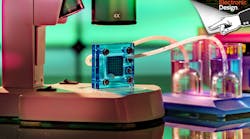Members can download the entire collection of April 1st articles in PDF format.
From April 1st, 2021 @Electronic Design
After several years of detailed study, the Environmental Protection Agency (EPA) has proposed new regulations that would ban the sale of all-electric and hybrid-electric vehicles (EV/HEVs) after 2035. They gave two primary reasons for this dramatic shift: First, the enormous environmental destruction caused by intensive mining of the minerals needed for the batteries including lithium, cobalt, and chromium; and second, the acknowledgement that these minerals are critical for many other applications, while their use in vehicles is consuming a finite resource to excess.
Administrators suggest that the auto industry look to alternatives such as hydrogen-based fuel cells for the next generation of EV/HEVs. This hydrogen can be obtained from water using one of several processes, including electrolysis, and is in no danger of running out.
As one official said, “When we first pushed the transition to battery-powered EV/HEVs using lithium-ion cells primarily, no one assessed the huge quantities of minerals that would be consumed. Yet these same minerals are irreplaceable for small-battery applications such as medical equipment, laptop computers, and smartphones, as well as many industrial alloys, materials, and even medicines themselves. We simply cannot afford to let motor vehicles ‘gobble up’ these minerals to such an extent. In addition, the damage caused by mining itself and mining waste is irreversible and unacceptable.”
Reactions from automobile companies has been mixed. They have invested heavily in battery-based EV/HEV products for decades, and the switchover in their product lines away from hydrocarbon-fuel vehicles is nearly complete. As this new proposal represents a dramatic shift in on-board energy storage, much of that design and manufacturing effort will need to be redirected.
The hope is that the design expertise and manufacturing experience embedded in the rest of the powertrain (electric motors, power-delivery controllers, and software) can be adapted, but the situation is very unclear at this point. As one senior engineer noted, “This is yet another manifestation of the well-known design maxim: Beware the law of unintended consequences.”
Read more at April 1st, 2021 @Electronic Design
